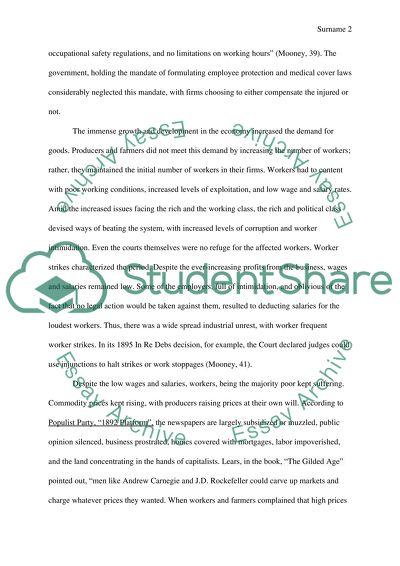Workers and farmers in the Gilded Age Essay Example | Topics and Well Written Essays - 750 words. Retrieved from https://studentshare.org/history/1487938-workers-and-farmers-in-the-gilded-age
Workers and Farmers in the Gilded Age Essay Example | Topics and Well Written Essays - 750 Words. https://studentshare.org/history/1487938-workers-and-farmers-in-the-gilded-age.


